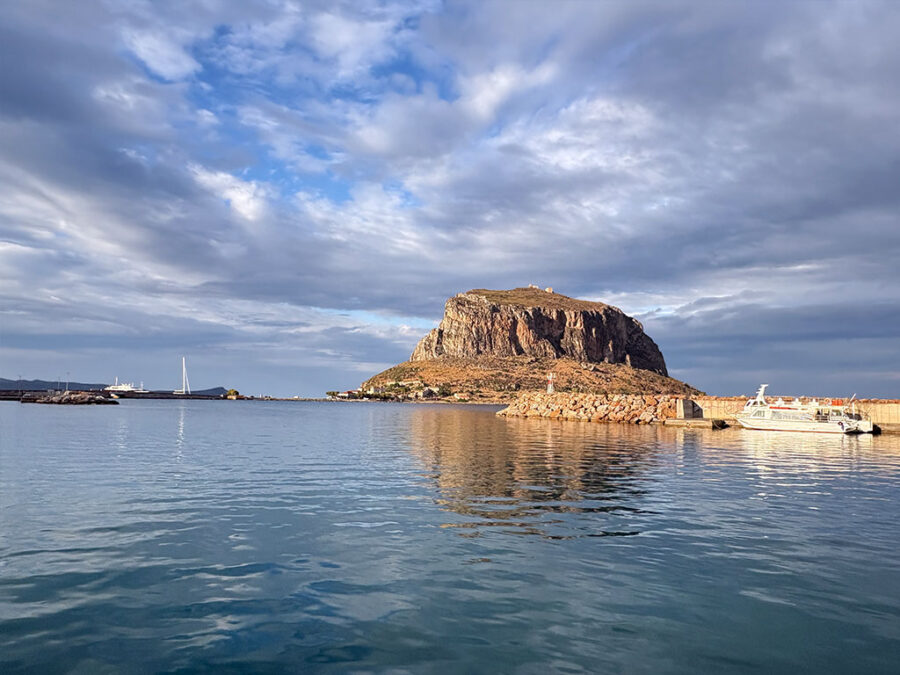The beautiful sides of the Peloponnese
Sometimes sailing is like a visit to the dentist. It’s nice when it’s over. That’s how we felt after the scary Friday night I described in the last article. Mateo had turned his obviously guilty conscience into constructive help and made sure that George arrived at midday on Saturday to get the repair of the railing underway. The repair was to take a week. We used the first day of the forced break to get a good sleep and recover. On Sunday, the weather was back to how it should be in Greece. Sunshine, blue skies and even the sea was calm again. We enjoyed our morning coffee at the stern of Rivercafe, gazing into the clear water and watching the impressive seagulls perform their aerial displays. Nothing reminded us of the haunting of the last few days – apart from our missing pulpit and the railing. It’s strange how unprotected one feels on a vessel, walking along the side deck without the protection of a railing. The beautiful sides of the Peloponnese
However, this unexpected stopover is a good opportunity to catch up on our previous destinations.
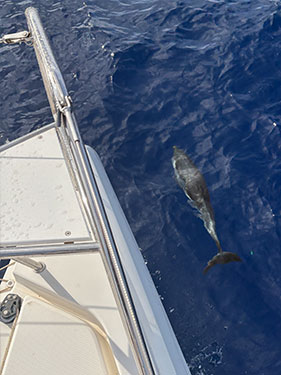

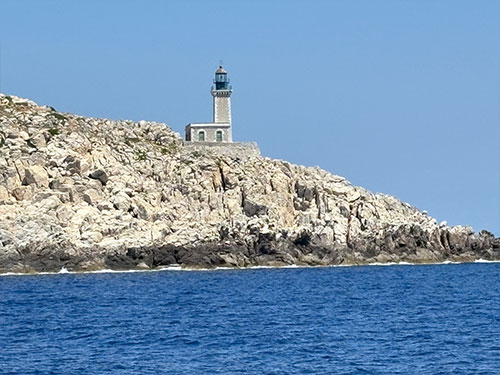
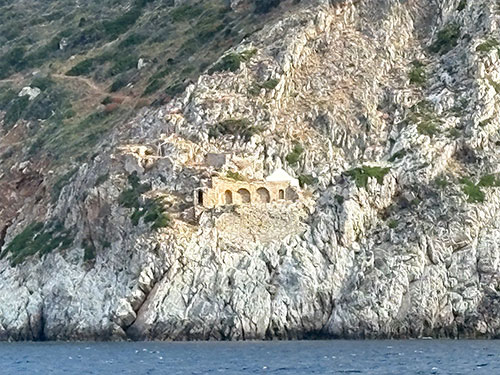
Dolphin visits, magical views, and churches in the most unexpected places
Porto Kagio
As we approach the sheltered bay, we realise that this is a special place. The ancient Greeks called it Psamathous, which means something like ‘sandy place’.However, the beaches around the bay are mostly pebbly. In addition to the Greeks, several other peoples also used the place as protection from the wind and sea, such as the Venetians and Ottomans. It seems that every visitor had to build a fortress, as there are still many of them in the impressively steep mountains. Certainly all with special views over the sea and mountains. The beautiful sides of the Peloponnese
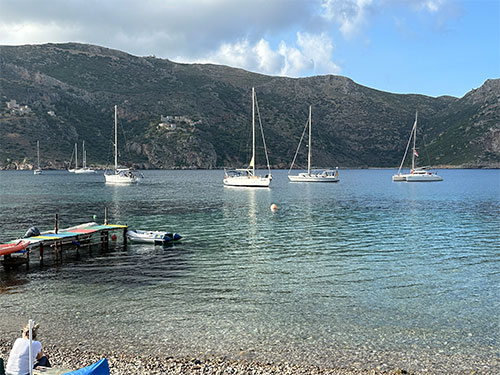
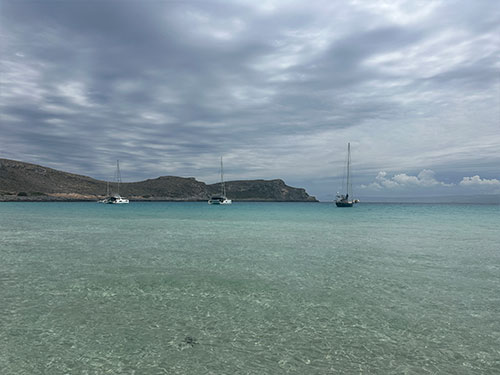
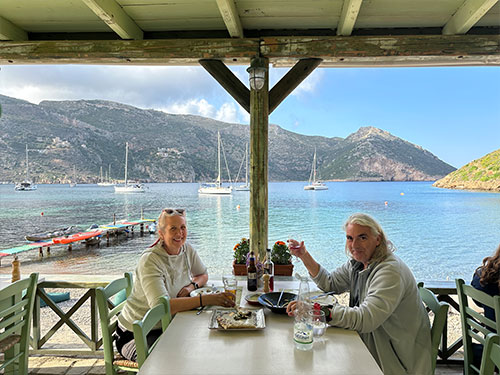
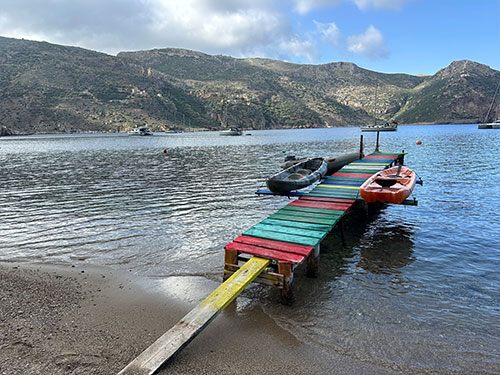
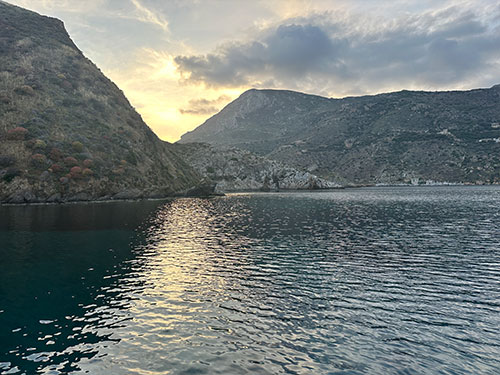
Porto Kagio Bay
This place is also called Mani – and the inhabitants Maniots, who are obviously proud of their stubbornness. We found two small settlements, high and lonely in the mountains, very special. We thought they were contemplative monasteries with no contact to the outside world. In fact, it was the mini village of Kainourgio Chorio, with absolutely nothing around. Just a steep path into solitude for barely 10 inhabitants. If there are children living there, they are sure to be super fit from the walk to school. May nobody forget a box of eggs.
Unfortunately, we didn’t have time for any mountain hikes as we only had one afternoon and one night. In the Naviliy comments, many sailors reported poor anchor holding. We can confirm this just as little as the good reviews of the most praised tavern Akrotiri. There are two tavernas in the bay, maybe worth to try the other one. Kagio is an exceptional place, not only for sailors. The beautiful sides of the Peloponnese
Elafonisos
The small island of Elafonisos is located at the southern end of the Peloponnese, to the east of which is the third Peloponnese bay. Elafonisos means ‘Deer Island’. Unfortunately, we didn’t see any deer or other animals. Only a few hundred people live here permanently and people seeking peace and quiet come to visit the island in summer.
There are three anchorages, two of which have wonderful beaches: Mikros Simos and Megalos Simos, also called Fagko Bay in the charts. We anchored on a perfect sandy bottom in the smaller one, Mikros Simos, with 5 other boats. Both bays are only separated by a tiny strip of land. Really cool.
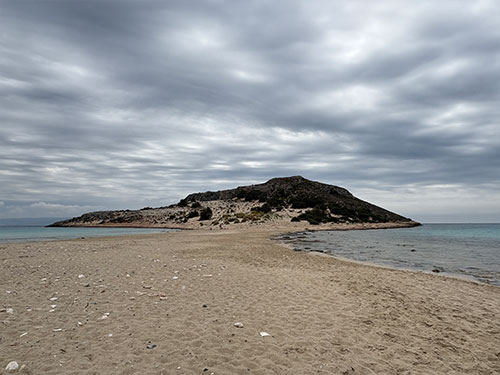

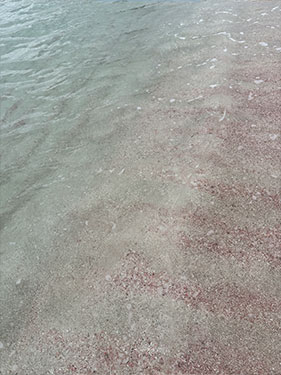
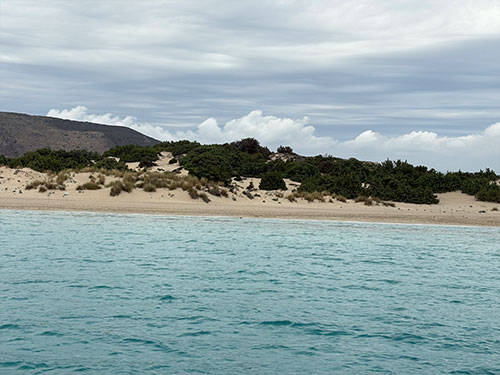
Cloudy bay but its definitely wonderful in the sunshine
There is nothing going on here in May. On the larger beach, however, a stall was set up for water toys and snacks. Allegedly everything is moderate so as not to put too much strain on the nature reserve. Visitors either come by their own vessel – or by ferry from the Peloponnese. We saw a few guest houses waiting for visitors.
Although the weather was grey, cloudy and cool during our visit, you couldn’t miss the fact that Elafonisos – which is only 19 km2 in size – is a real highlight. For us, it was only enough for a long walk along the beach, but we would have loved to spend a few days in this almost Caribbean gem.
Monemvasia/Gefira
Extraordinary places rarely remain hidden. Monemvasia, however, has apparently succeeded in doing so. In 538 BC, the Byzantines founded a completely enclosed fortress city that can only be entered on foot, through a heavy gate. I often use the word ‘spectacular’, but this time it is very appropriate. Monemvasia is located on a rocky island, sometimes called ‘Little Gilbraltar’, connected to the mainland only by a narrow road and a bridge. There lies the second part, the small town of Gefira with its harbour. Around the bay – which was hit too hard by waves last Friday – there are numerous tavernas right by the water.
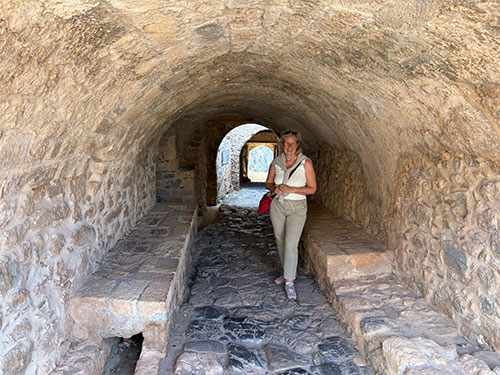
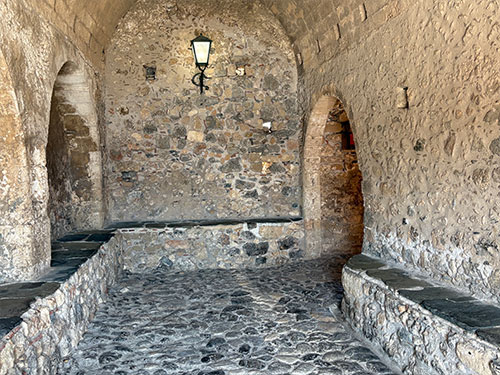
Entrance to Monemvasias
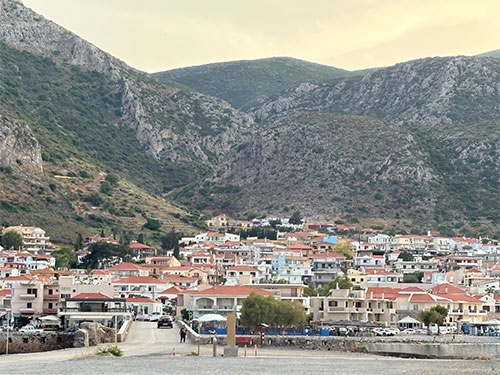
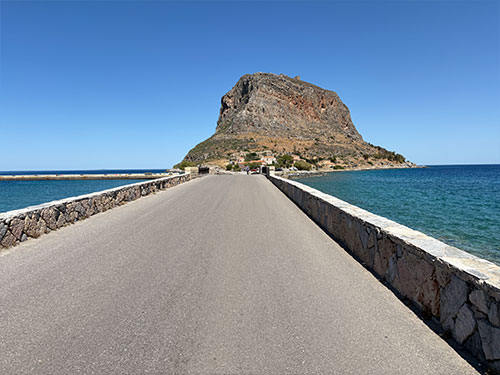
Gefira on the mainland, bridge to Momenvasia
The walk from the harbour to Monemvasia is about 1 km long and leads picturesquely along the rocky coast. When you reach the town gate, good shoes are helpful. The streets are paved with polished stones and it is quite slippery. Especially if you walk through to the ‘old city’, high up in the rocks in the mountain with the Hagia Sophia church. The arduous path to the ruined city is rewarded with a view over the Aegean Sea. Back in the village, there are plenty of restaurants and bars with views over the sea for refreshments.
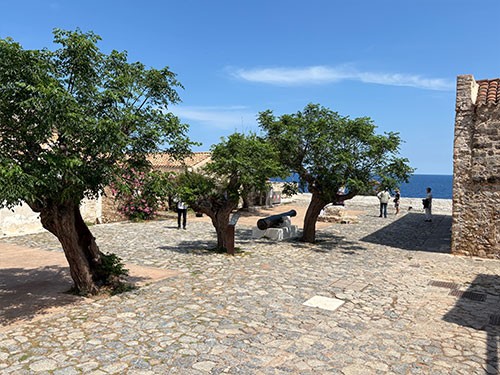
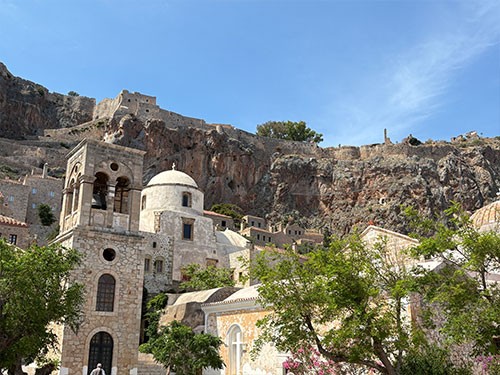
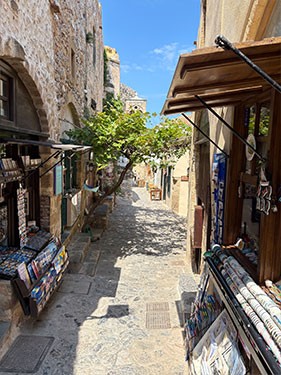
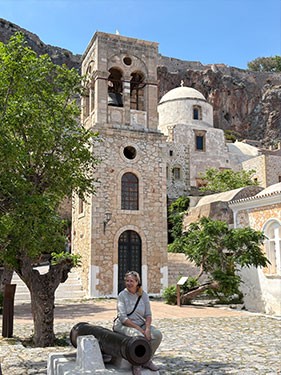
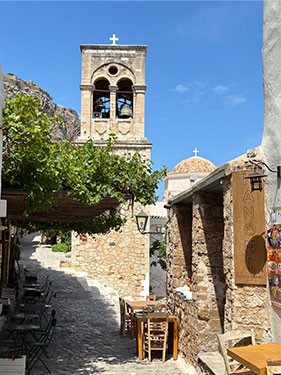
Inside the old town
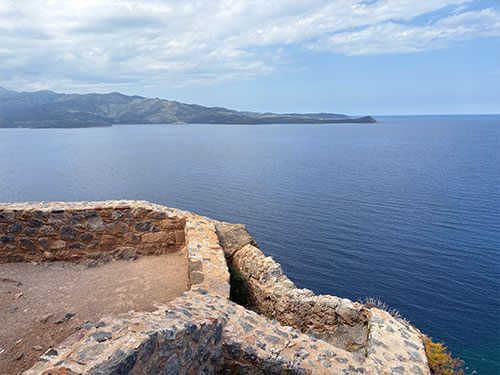
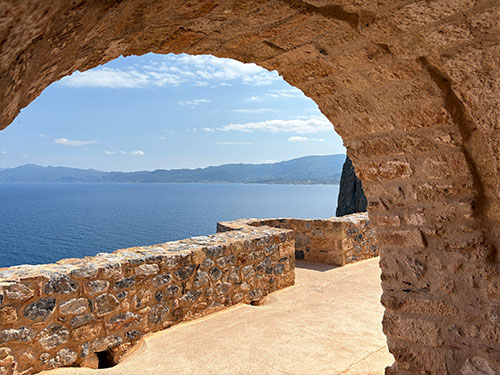
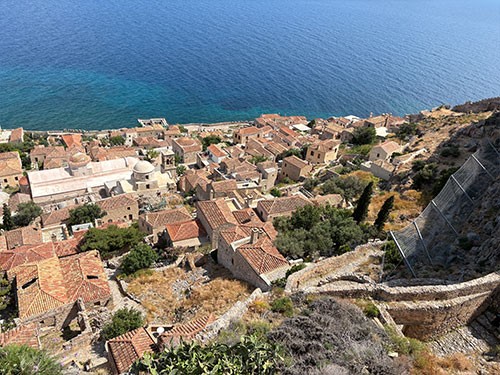
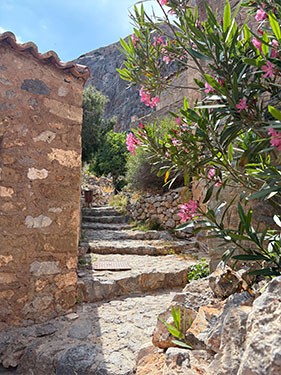
View from the old town up in the moutain
There are three good options for sailors: Anchoring south of the bridge in front of the harbour, the free harbour in Gefira or an anchorage north of the bridge. The weather and the swell will decide which option is better.
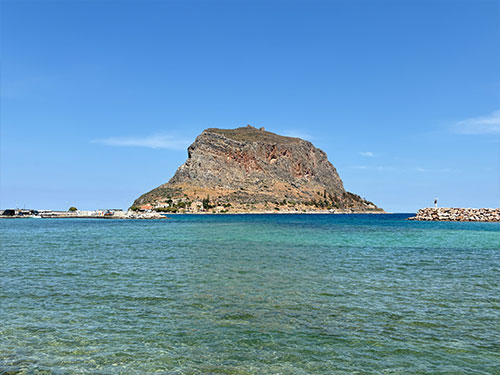
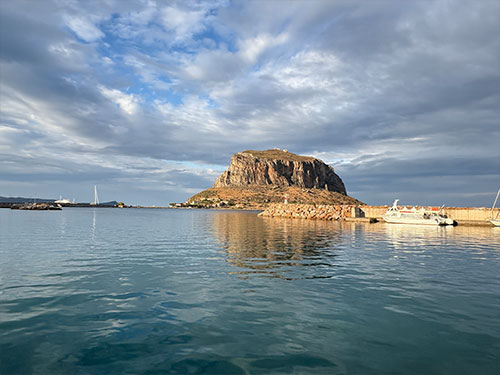

The called it “little Gibraltar” – but without the monkeys
As we had to stay here longer than planned, Ka boldly used the time for a first dip in the sea, at a refreshing 19.5 degrees. As a self-confessed chicken, I only dipped half a leg into the cold water.

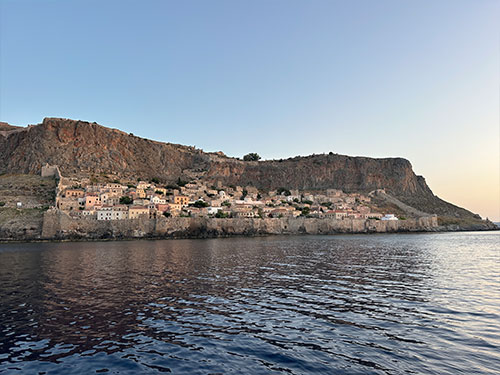
Departing at dawn, the old town from sea side
The return of the railing
While Ka is on the phone to our friend Bettina, we get the call that our railing is ready and can be delivered tomorrow. As beautiful as this place is, we want to move on. On the one hand, because there is still a lot to see, and on the other, because the weather forecast for the weekend is for stronger winds and, above all, bigger waves again. One Friday with a blue eye is enough for us. Further north we are in more sheltered climes – at least in theory. My relationship with weather reports is still slightly strained and we still don’t have a canary.
This place in the south of the Peloponnese obviously gets too much of the changing weather systems that blow around the Peloponnese. Meltemi and Scirocco have plenty of room here and from the west, the Mediterranean from Libya and Italy has plenty of fetch to throw decent waves onto the land.
We are now at the southernmost point of our journey and will now sail north towards the former capital of Greece and anchor in some of the numerous bays. / Holger Binz

